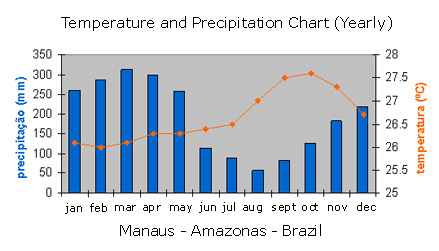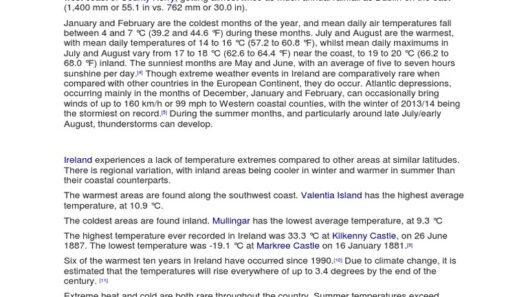The Amazon rainforest, often referred to as the “lungs of the Earth,” is not only crucial for biodiversity but also plays a pivotal role in regulating the global climate. This verdant expanse experiences a unique climatic phenomenon characterized by its tropical rainforest climate, which is predominantly steamy and humid. Understanding the intricacies of this climate is essential to grasping the environmental dynamics that govern this important biome.
At the heart of the Amazon’s climate is its geographical location. The rainforest straddles the equator, primarily within the realms of South America. Such positioning results in an equatorial climate that remains consistently warm throughout the year. Unlike many regions that experience distinct seasons, the Amazon witnesses a relatively uniform temperature range. Average temperatures hover around 25 to 30 degrees Celsius (77 to 86 degrees Fahrenheit), with minimal fluctuations during the calendar year.
One of the most salient features of the Amazon’s climate is its profound humidity. Humidity levels can soar to between 80% and 90%. This oppressive moisture is a consequence of the rampant evaporation that occurs due to the abundant precipitation combined with the dense vegetation. Plants transpire copiously, releasing water vapor back into the atmosphere, which further complicates the temperature-humidity interplay. This phenomenon creates a steamy atmosphere, giving rise to the rainforest’s lush and thriving ecosystems.
Precipitation is another hallmark of the Amazon’s climate, with the region receiving an average of 1750 to 2000 millimeters (69 to 79 inches) of rainfall annually. This rainfall is not evenly distributed but is concentrated in a wet season that typically spans from December to May. During this period, tropical storms and heavy downpours are commonplace, resulting in an impressive accumulation of water that sustains the diverse array of flora and fauna. Conversely, the dry months from June to November carry relatively lower rainfall, yet still contribute to the rainforest’s overall humidity.
Additionally, the interplay between temperature and precipitation leads to the emergence of distinct ecosystems within the Amazon. While most of the rainforest is classified as tropical, variations exist that can create microclimates. For instance, certain areas may experience heightened humidity due to the proximity to rivers and streams. These riverine ecosystems are often teeming with biodiversity and exhibit different flora tailored to the specific moisture levels and soil conditions.
Moreover, temperature inversions can manifest, especially during the wet season, when warmer air layers trap cooler air beneath them. This phenomenon can lead to localized increases in humidity and precipitation, accentuating the dense cloud cover typical of the Amazon. Such climatic variations are crucial for maintaining the overall health of the ecosystems, influencing species distribution, migration patterns, and reproductive cycles.
Climate change poses a burgeoning threat to the Amazon rainforest, exacerbating existing vulnerabilities within this delicate ecosystem. Alterations in rainfall patterns caused by global climate shifts can lead to droughts or excessive flooding, disrupting the delicate balance that sustains the myriad species inhabiting the forest. A rise in temperature can also accelerate deforestation and increase forest fires, sealing the fate of countless species and the ecological integrity of the rainforest itself.
Furthermore, anthropogenic activities such as logging, agriculture, and mining contribute significantly to the destabilization of the Amazon’s climate. Deforestation not only leads to a loss of tree cover, which is integral in carbon absorption but also impacts local climatic conditions. The removal of trees reduces transpiration, thereby altering humidity levels and leading to a potential decrease in precipitation. Such cascading effects can render vast areas of the rainforest more susceptible to drought and degradation, exacerbating the overall climate impact on this irreplaceable resource.
Protection and conservation efforts are critical in mitigating the adverse effects of climate change on the Amazon. Reforestation projects, enforcing sustainable land management practices, and international cooperation can play a vital role in preserving this tremendous resource. By restoring degraded areas and enhancing biodiversity, these efforts can help fortify the rainforest’s resilience against climatic fluctuations.
Lastly, the global implications of the Amazon’s climate cannot be understated. As a major carbon sink, the rainforest absorbs vast quantities of carbon dioxide, thus helping to mitigate the effects of climate change on a global scale. Protecting the Amazon is not merely a regional concern; it is a critical component of an integrated global strategy to combat climate change. The intricate balance of its climate underpins not only the survival of countless species but also the health of the planet itself.
In conclusion, the climate of the Amazon rainforest is characterized by steamy, humid conditions with high temperatures and significant rainfall. The unique climatic conditions foster a breathtaking biodiversity essential for ecological balance. While the threat of climate change looms large, concerted conservation efforts remain imperative to safeguard this invaluable ecosystem for future generations. Understanding the complexities of the Amazon’s climate can empower stakeholders and communities to act decisively in its preservation, thereby ensuring its ecological legacy continues to thrive.







